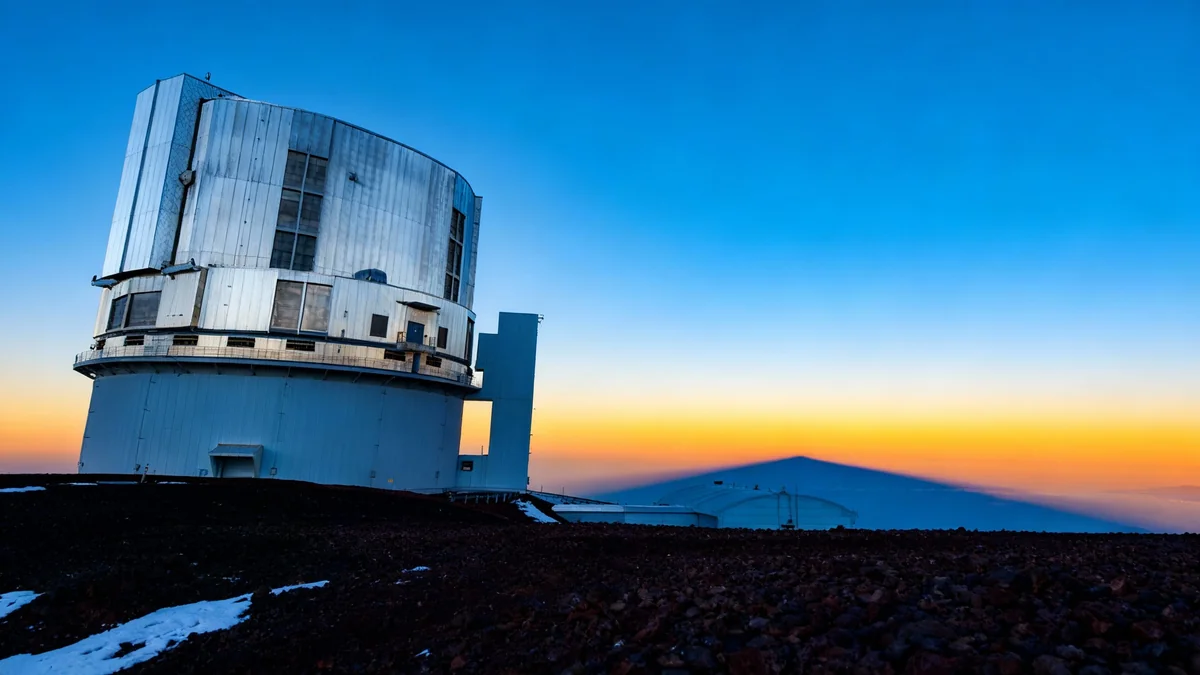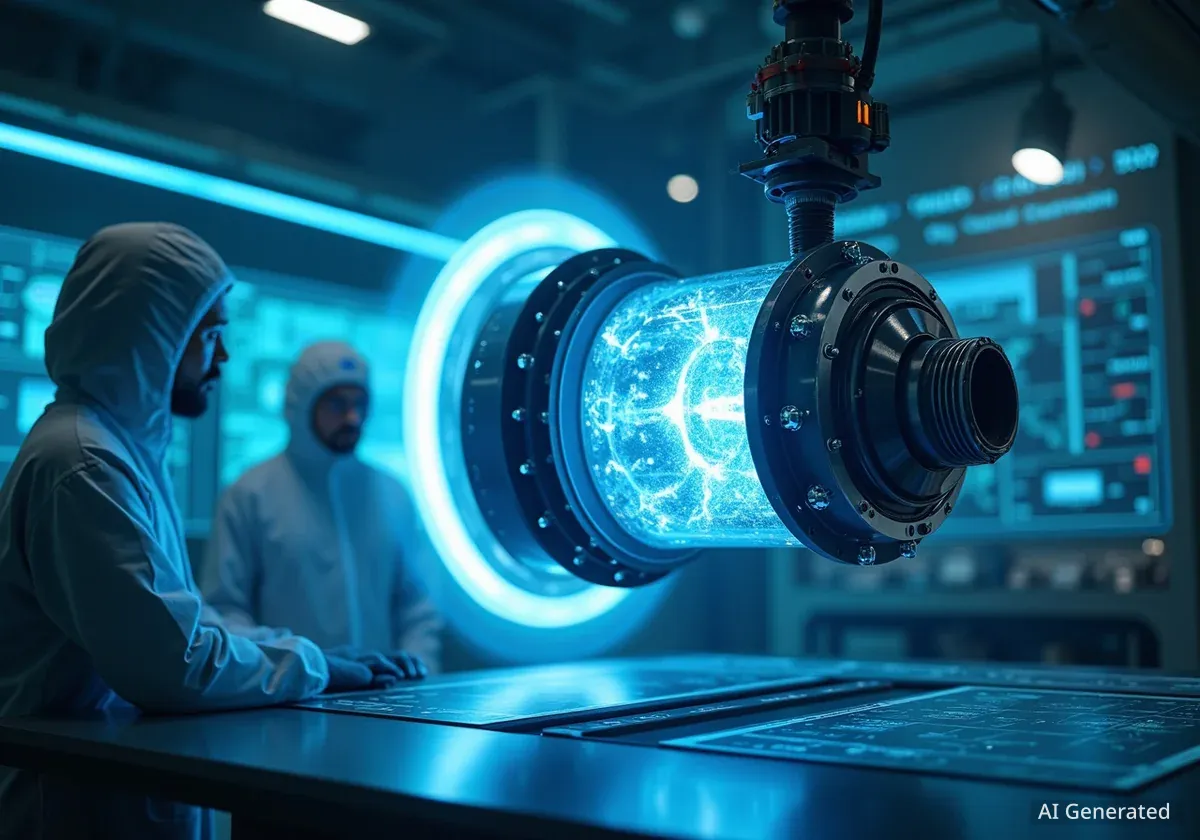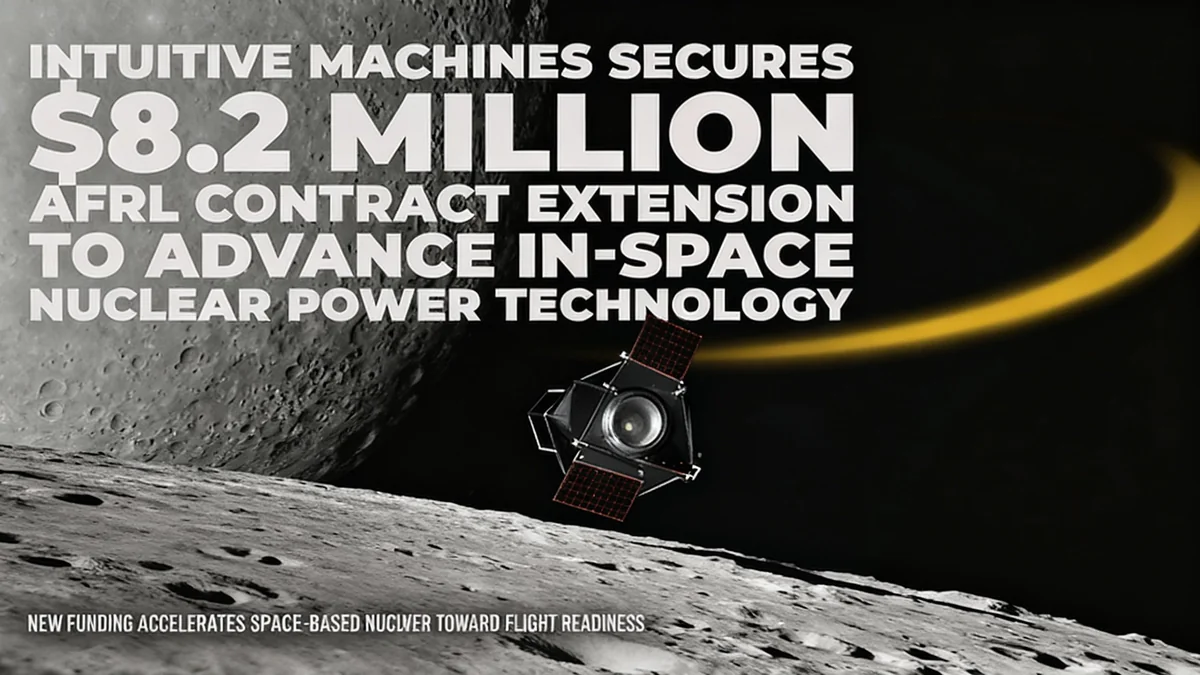A revolutionary new instrument installed on the Subaru Telescope atop Maunakea is providing astronomers with an unprecedentedly clear view of distant stars. This technology has already produced a surprising discovery, revealing a lopsided gas disk spinning around a nearby star—a detail that was previously invisible.
The device, known as a photonic lantern, was developed by an international collaboration including the University of Hawaiʻi and the Paris Observatory. Its first results, published in The Astrophysical Journal Letters, signal a new era in high-resolution imaging from a single ground-based telescope.
Key Takeaways
- A new instrument called a "photonic lantern" is now operational on the Subaru Telescope in Hawaiʻi.
- It has successfully captured an ultra-high-resolution image of a gas disk around the star beta Canis Minoris.
- The image revealed the disk is unexpectedly lopsided, a feature never observed before.
- The technology was developed by a global team and highlights Hawaiʻi's growing role in space engineering.
A New Window to the Stars
Astronomers have long sought ways to overcome the atmospheric distortion that blurs images from ground-based telescopes. The new FIRST-PL instrument, which incorporates the photonic lantern, represents a significant leap forward in solving this problem. It is installed on the Subaru Coronagraphic Extreme Adaptive Optics (SCExAO) platform, an advanced system designed to correct for these distortions.
The photonic lantern works by taking the light collected by the telescope and splitting it into multiple separate channels. This process isolates subtle patterns and fluctuations in the starlight that would otherwise be lost. Computers then reassemble the data from these channels to construct an image with remarkable clarity.
"This device splits the starlight according to its patterns of fluctuation, keeping subtle details that are otherwise lost," explained Yoo Jung Kim, a graduate student at UCLA and the lead author of the study. "By reassembling the measurements of the outputs, we could reconstruct a very high-resolution image of a disk around a nearby star."
First Light Reveals a Cosmic Surprise
The team directed the new instrument toward beta Canis Minoris, a star located relatively close to our solar system. The goal was to test the device's capabilities and capture an image of the gaseous disk that surrounds the star. The results exceeded expectations.
The reconstructed image showed that the fast-spinning disk is not symmetrical as previously thought. Instead, it is distinctly lopsided, an observation that challenges existing models of how such stellar systems form and behave. This discovery was only possible due to the extreme resolution provided by the photonic lantern technology.
What is a Photonic Lantern?
Think of starlight as a complex musical chord containing many notes. A traditional telescope might hear the whole chord, but a photonic lantern can separate it into each individual note. This allows scientists to analyze every component of the light with much greater precision, leading to sharper, more detailed final images.
This initial finding demonstrates the instrument's power to reveal hidden structures in the cosmos. Scientists can now apply this technique to study other stars, search for planets, and investigate the intricate environments where planetary systems are born.
Hawaiʻi at the Forefront of Space Engineering
The success of this project is also a major achievement for the University of Hawaiʻi's Space Science and Engineering Initiative (SSEI). Launched in 2024, the program aims to establish Hawaiʻi as a key center for developing space technology and training the next generation of engineers and scientists.
Sébastien Vievard, a faculty member at UH who helped lead the project, emphasized the collaborative nature of the achievement. The instrument combines advanced photonics with precision engineering, much of which was conducted in Hawaiʻi.
"What excites me most is that this instrument blends cutting-edge photonics with the precision engineering done here in Hawaiʻi," Vievard stated. "It shows how collaboration across the world, and across disciplines, can literally change the way we see the cosmos."
The Subaru Telescope
Located on Maunakea, a dormant volcano on the island of Hawaiʻi, the Subaru Telescope is one of the world's premier astronomical observatories. Its 8.2-meter primary mirror and high-altitude location provide excellent conditions for observing the universe. The addition of instruments like FIRST-PL keeps it at the leading edge of scientific discovery.
The SSEI program integrates hands-on engineering experience with classroom learning, preparing students for careers in the aerospace industry. This project serves as a powerful example of the initiative's potential to produce world-class technology and contribute to fundamental scientific research.
Future Implications for Astronomy
The development of the photonic lantern has far-reaching implications. By enabling single telescopes to achieve resolutions previously thought possible only with multiple, linked observatories, it opens up new avenues for research.
Key areas that could benefit from this technology include:
- Exoplanet Detection: The instrument can help astronomers better distinguish the faint light of planets from the glare of their host stars.
- Stellar Physics: Studying the surfaces of stars and the disks around them in greater detail can provide new insights into stellar evolution.
- Galaxy Formation: The technology could potentially be scaled to study the cores of distant galaxies.
The international team behind the project included researchers from UH, UCLA, the Paris Observatory, the University of Sydney, and the Subaru Telescope. Their work not only sets a new benchmark for astronomical imaging but also paves the way for future discoveries about our universe.





